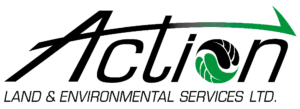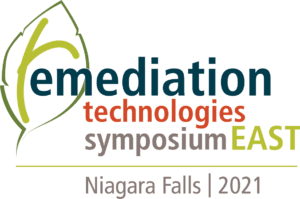The ESAA photo contest has returned. Do you work for an ESAA Member company? If so, they you are eligible to enter the 2022 ESAA Photo Contest.

The theme for 2022 is ‘Canadian Wildlife.’ No matter how big or small all of Canada’s wildlife is simply amazing. Just remember to give wildlife space, don’t stress animals and don’t submit photos of any nesting wildlife. Full details below. Submission deadline – August 1st, 2022.
Prizes:
- 1st Place – $250 Posterjack Gift Certificate
- 2nd Place – $100 Posterjack Gift Certificate
- The top 12 photos will be included in the first annual ESAA calendar.
Full contest details, rules, submission upload link and more can be found at: https://esaa.org/membership/
Get out and enjoy nature!
RemTech East Presentations Now Available
On behalf of ESAA, thank-you for your support of RemTech East. From all accounts RemTech East was an overwhelming success. Great presentations and great networking. This would not be possible without the great support from all of our sponsors, exhibitors, speakers and delegates.
Watch for updates later this year about the next edition of RemTech East.
Alberta Government Announces New Environment and Parks Minister
The Alberta Government recently announced a number of cabinet changes including: Whitney Issik, currently the Associate Minister of Status of Women, becomes Minister of Environment and Parks. The current Minister of Environment, Jason Nixon, becomes Minister of Finance becomes President of Treasury Board and Minister of Finance.
AER: Mandatory Closure Spend Target Set for 2023
Release Date: June 28, 2022
Under the Government of Alberta’s new Liability Management Framework, we have implemented an Inventory Reduction Program (described in Directive 088: Licensee Life-Cycle Management), which involves setting industry-wide closure spend targets. Closure spend targets increase the amount of closure work that is occurring in the province as licensees are required to spend a minimum amount annually on abandoning, remediating, and reclaiming their oil and gas sites. (These targets are referred to as closure quotas in section 3.014 of the Oil and Gas Conservation Rules.)
To determine closure targets, we use liability associated with inactive wells (as per Directive 013: Suspension Requirements for Wells) and inactive facilities (no activity for 12 months), collectively referred to as “inactive liability.”
Every year, we release by July 31 industry-wide closure spend targets for a five-year period on our website, www.aer.ca > Regulating Development > Project Closure > Liability Management Programs and Processes > Inventory Reduction Program. The next year’s target is set, while the remaining four years are forecast. This is a change from what we did last year. In Bulletin 2021-23, targets were set for both 2022 and 2023.
Targets are reviewed annually and are subject to change due to a variety of factors, such as market conditions and previous years’ closure spending. When reviewing the 2023 closure target, we opted to increase the target based on three considerations:
- Our preliminary data indicate that in 2021 about $628 million was
spent on closure activity, funded by industry and grants received from
the Government of Alberta’s Site Rehabilitation Program. This amount represents a closure expenditure that is 48 per cent higher than the industry-wide mandatory target set for 2022. - Higher commodity prices are creating the financial conditions where licensees are able to increase closure spending.
- The oil and gas service sector is experiencing growth for the first
time since 2014, supported by the Site Rehabilitation Program.
Increasing the closure target helps maintain that growth.
Year | Industry-wide mandatory target |
2023 (set) | $700 million |
2024 (forecasted) | $764 million |
2025 (forecasted) | $833 million |
2026 (forecasted) | $909 million |
2027 (forecasted) | $992 million |
Licensee-Specific Targets
Each oil and gas licensee with inactive wells and facilities is required to meet an individual annual mandatory target.
In setting licensee-specific targets, we consider the licensee’s proportion of the total industry inactive liability and the licensee’s financial health, determined using financial information provided under Directive 067: Eligibility Requirements for Acquiring and Holding Energy Licences and Approvals. Licensees are reminded that financial submissions under Directive 067 (Schedule 3) must be submitted within 180 days after fiscal year end.
Licensee-specific targets for 2023 will be visible by July 31 within
OneStop. Licensees may still commit to a voluntary closure spend target that is more than their mandatory target to qualify for incentives. Further information about the Inventory Reduction Program, closure targets (mandatory and voluntary), and incentives for committing to a voluntary target is available in Directive 088 and Manual 023: Licensee Life-Cycle Management.
If you have any questions regarding the program, contact InventoryReduction@aer.ca. Please do not inquire about licensee-specific targets until after July 31, 2022
AER: Invitation for Feedback on Revisions to Draft Directive 023
Release Date: June 27, 2022
We are seeking feedback on updates to the draft of Directive 023: Oil Sands Project Applications that was released in 2013.
The primary changes are as follows:
- Removed duplicate requirements that exist in other directives (e.g., Directive 085: Fluid Tailings Management for Oil Sands Mining Projects) or provincial legislation.
- Aligned socioeconomic requirements with the Environmental Protection and Enhancement Act, as well as clarified socioeconomic requirements for applications without an environmental impact assessment.
- Moved all reservoir containment requirements from Directive 086: Reservoir Containment Application Requirements for Steam-Assisted Gravity Drainage Projects in the Shallow Athabasca Oil Sands Area into section 7 of this directive.
To provide feedback on the proposed revisions to Directive 023, complete the public comment form on our website. Comments in other formats can be emailed to RegManagement@aer.ca or mailed to Alberta Energy Regulator, Suite 1000, 250 – 5 Street SW, Calgary, Alberta T2P 0R4. Feedback will be accepted through August 26, 2022.
All feedback received will be reviewed and may be used in finalizing the directive. The comments provided through this consultation will form part of the public record and may be attributed to the specific individuals who provided them. Personal information provided with comments will be collected, used, and disclosed in accordance with the Freedom of Information and Protection of Privacy Act. We may use the personal contact information you provide for follow-up communication related to your feedback.
The revised edition of Directive 023 is available on our website at www.aer.ca > Regulating Development > Rules and Directives > Directives under the name “Directive 023 (2022 Draft).” If you have any questions, contact our Customer Contact Centre by phone at 1-855-297-8311 or by email at inquiries@aer.ca.
Excess Soils: Adapting to new policies on the horizon in British Columbia
New regulations on the handling of excess soil may have a big impact on the construction and environment industries in British Columbia. With these changes on the horizon, companies in B.C. that successfully navigate the legislation focused on testing soil for contaminants and tracking how that soil is ultimately used, will have a competitive advantage.
The B.C. government has released the Regulating Soil Relocation Final Policy Direction Paper, which outlines proposed changes to the Contaminated Sites Regulation under the province’s Environmental Management Act. The amendments follow consultation around the province’s intentions paper that was released in early 2021.
Bill 3 (the Environmental Management Amendment Act, 2020) was passed in March 2020 but is not yet in effect. Once it comes into force, it will enable a new process for relocating soil that, amongst other things, will extend regulatory requirements to uncontaminated soil.
The regulation is being finalized and has not been passed by the province. The Government of B.C. announced last week that the new regulation is likely to come into effect on March 1st of next year. But discussion with provincial authorities has provided a reasonably clear picture of the issues that the new legislation is expected to address, and how it will address them.
This issue of what to do with excess soil is not unique to British Columbia as it occurs anywhere that construction happens on properties that may have been impacted by previous industrial or commercial use. For example, the province of Ontario developed Regulation 406/19 to put regulatory certainty around the issue of excess soil. This legislation has provided the province’s developers and other stakeholders with a clear idea of the steps they must follow, and the costs and timelines involved. B.C.’s legislation is likely to provide similar guidance.
Replacing regulatory ambiguity with certainty
The new regulations for soil relocation in B.C. are expected to fill a regulatory gap, putting greater certainty around the obligations of developers who have excess soil to offer, and the owners of potential sites for use or disposal of that soil.
Currently, much of the soil pulled from construction sites, particularly if there may have been previous commercial or industrial use of the property, is being sent to landfill. What’s significant is that much of the soil that ends up in landfills is suitable for reuse. The practice of landfill disposal is largely due to concerns that contaminants in the soil might place liabilities on the providers or receivers of that soil. Because of the cost of landfill disposal, this can unnecessarily increase construction costs. Another downside is that it takes up space in landfills and treats excess soil like a waste product versus treating it like what it is — a valuable resource.
Part of the government’s purpose for the new regulation is diverting excess soil away from landfills and finding a mechanism that developers and stakeholders can rely on, to give that soil a more sustainable future. That future might include reuse on another construction site or for flood protection, or placement in non-landfill disposal. In each case, the proposed regulatory changes will allow soil from land where commercial or industrial uses occurred and, subject to analysis of substances associated with the commercial or industrial use to confirm environmental compliance, enable its reuse at a receiving site with the comparable land use.
By increasing the opportunities for soil relocation and reuse — rather than landfill disposal— there is potential to reduce the carbon footprint of construction projects, as there will be less need for diesel-powered trucks to haul loads of soil long distances to landfills when there is a soil reuse opportunity “next door”.
Transparency supports better stakeholder relations
Another expected benefit from B.C.’s legislation is transparency. It is anticipated that the new regulations will be supported through a publicly available online registry for soil relocation in BC.
Currently, stakeholders such as community members may have concerns and questions about the potential to spread commercial and industrial contaminants through impacted soil. They may be worried about contaminants in soil used for purposes such as leveling a parking lot, or for flood control. Currently, there can be a huge amount of soil-related data on a large site — and paper records, even if scanned and stored electronically, are hard to search and decipher.
By contrast, computerized systems for tracking soil loads provide better management tools. And having that information made publicly available via online registry will reassure stakeholders of the quality of the soil that may have impacts on their lives. Transparency around record-keeping for relocated soil may result in better relations with the public, with less opposition and fewer project delays.
Meeting concerns of Indigenous Peoples
A top concern for Indigenous Peoples of B.C. is the preservation of archaeological artifacts found at a project site. The legislation is expected to address requirements around notifications of Indigenous Peoples and historic resource assessments.
As well, because many Indigenous Nations entities have a business interest in receiving soil for disposal on their lands, they need to know about any potential contaminants in the truckloads of soil being delivered to their communities. They also want to be sure that the receiving site does not contain any historic resources that would be covered by loads of imported soil. The new legislation is expected to provide steps to address both issues.
In B.C. in particular, there’s a growing understanding that project proponents have a responsibility to consult with Indigenous Nations on all land matters. An effective, transparent, and publicly available online public registry will support that responsibility.
Options for future use of properties
Having public records on the use and disposal of relocated soil may support future development of properties. For example, consider a property that is being developed for commercial use. The owner may be willing to accept fill that meets commercial standards but would not meet standards for residential development. Accepting fill that meets only commercial standards might mean importing a liability that will prevent future residential use. So, to protect the future value of the property, the developer might opt to accept only fill that meets residential standards.
How to help stakeholders in this process
Professional firms can help property developers, construction companies and other interested parties to avoid problems and access opportunities coming from B.C.’s new regulatory environment around soil. This can include:
- Helping developers interpret the legislation and providing advice on the best ways to meet the requirements and priorities of the provincial government.
- Supporting the development of testing and tracking tools and using the available technologies for determining the best testing methodologies for complying with the new regulatory environment.
- Delineating the soil on a site. For example, a building site might be covered with two or three metres of impacted fill, but the soil below is determined to be without significant impacts. A development plan might indicate that while the upper layer of soil on the site will need to be treated as impacted soil, the lower layers do not need to receive the same level of sampling and testing, and perhaps can be classified as clean fill.
- In addition to soil chemistry, professional firms can also assess the structural properties of the soil. The soil structure is another key consideration when identifying reuse options, such as whether the soil can be used to support a building’s foundations.
While regulations such as B.C.’s legislation on soil relocation can to some extent limit developers’ choices, they also have the effect of providing more freedom. This includes sending soil off-site to be reused elsewhere, and accepting soil pulled from construction sites. The result is likely to be greater transparency, less concern about potential long-term liabilities, and more sustainable management of soils in BC.
It’s important to have a solid understanding of how these new regulations could impact your business.
Written by Mark Adamson, Principal Environmental Geoscientist, Golder, a member of WSP Canada and Tom Frkovich, Technical Director, Soil and Water, Environment Canada.
National ban on harmful single-use plastics comes into effect soon
Today, Minister of Environment and Climate Change, Steven Guilbeault, and Minister of Health, Jean-Yves Duclos, published final regulations to prohibit single-use plastics including: checkout bags; cutlery; foodservice ware made from or containing problematic plastics that are hard to recycle; ring carriers; stir sticks; and straws (with some exceptions).
The ban on the manufacture and import of these harmful single-use plastics, barring a few targeted exceptions to recognize specific cases, will come into effect in December 2022. To provide businesses in Canada with enough time to transition and to deplete their existing stocks, the sale of these items will be prohibited as of December 2023. The Government will also prohibit the export of plastics in the six categories by the end of 2025, making Canada the first among peer jurisdictions to do so internationally.
“We promised Canadians we would deliver a ban on single-use plastics. Today, that’s exactly what we’ve done. By the end of the year, you won’t be able to manufacture or import these harmful plastics,” said Guilbeault. “After that, businesses will begin offering the sustainable solutions Canadians want, whether that’s paper straws or reusable bags. With these new regulations, we’re taking a historic step forward in reducing plastic pollution, and keeping our communities and the places we love clean.”
Over the next decade, this world-leading ban on harmful single-use plastics will result in the estimated elimination of over 1.3 million tonnes of hard-to-recycle plastic waste and more than 22,000 tonnes of plastic pollution, which is equivalent to over a million garbage bags full of litter.
This measure is an important contribution to Canada’s ongoing comprehensive agenda to address plastic waste and pollution, putting Canada among world leaders in fighting plastic pollution and will help to meet the commitments of the Ocean Plastics Charter and the United Nations Sustainable Development Goals (SDGs).
In Canada, up to 15 billion plastic checkout bags are used every year and approximately 16 million straws are used daily. Single-use plastics like these make up most of the plastic litter found on shorelines across Canada.
In early summer, the Government will begin to consult on approaches to a federal public plastic registry and the development of labelling rules that would prevent the use of the chasing arrows symbol on plastic items unless at least 80 percent of recycling facilities in Canada accept them and they have reliable end markets. This paper will also present a proposal for comment on the labelling of plastic items regarding their ability to be composted.
Several environmental organizations are pleased to see this ban come to fruition.
“We applaud the government for making these single-use plastic bans a reality. They’re coming in a year earlier than the draft regulations suggested and now include a ban on the export of these harmful products to other countries. These are welcome developments that reflect the expectations of Canadians and environmental groups like Environmental Defence,” said Karen Wirsig, plastics program manager at Environmental Defence.
Similarly, Oceana Canada has been advocating to reduce plastic pollution, meeting with decision makers, publishing reports on the state of plastic and putting forward science-based recommendations to achieve zero plastic waste.
“Today’s announcement ensures that Canada is embarking on a true transition away from unnecessary single-use plastics; this victory means that billions of plastic items each year that otherwise could have threatened sea life like whales and turtles will no longer be adding to the global plastic disaster,” said Anthony Merante, plastics campaigner at Oceana Canada. “We will continue working with Canadians and the government to ensure more unnecessary single-use plastics are added to the list of banned items moving forward.”
For further information, visit:
Single-Use Plastics Prohibition Regulations
To view the announcement video, click here.
New ESAA Member
ESAA welcomes the following new member. If you are not a member of ESAA you can join now via: https://esaa.org/join-esaa/
Full Member:

Action Land & Environmental Services Ltd.
Box 20096, Kensington PO
Medicine Hat, AB T1A 8M4
Phone: (403) 669-1953
Web: https://www.actionland.ca/
Janice Redmond, VP Corporate Strategy and Development
janice@actionland.ca
Profile:
Action Land & Environmental Services Ltd. is a leading facilitator of land and environmental management services throughout Western Canada. With over two decades of experience and expertise, we pride ourselves on excellent communication, client-focused values, and a solid team concept. Our team works within a wide range of industries including oil and gas, utilities, all levels of government, agriculture, land development, and with private clients. We offer a depth of technical expertise and a comprehensive scope of consulting services to solve our client’s environmental, land, and regulatory requirements.
Upcoming Events
July 19th, 2022
3:00 pm – 6:00 pm
Troubled Monk Brewery
5551 45 Street, Red Deer
ESAA invites you to attend an industry mixer at the Troubled Monk Brewery located in Red Deer. The mixer is an opportunity to network with other industry professionals, ESAA Staff, and Board of Directors.
Everyone is welcome to join and you do not have to be an ESAA member to attend. If you have staff or offices in the Red Deer area, please share this with your colleagues.
There is no cost to attend and ESAA will provide a selection of appetizers and the first beer (or beverage) from Troubled Monk’s selection.
Hope to see you there!
CLICK HERE TO RSVP
PLEASE RSVP BEFORE JULY 12th!

Call for Abstracts / Early Bird Registration
ESAA is pleased to announce that early bird registration is open for the 21st edition of RemTech. RemTech 2022 will feature an out door tailgate party to start the conference, 55 exhibits, technical talks, networking opportunities and three great keynotes, featuring:
- Mark Hineline, Author of Ground Truth:
A Guide to Tracking Climate Change at Home - Dr. Dave Williams, Former Canadian Shuttle Astronaut, ER Doctor and
Aquanaut - Peter Mansbridge, Former Chief Correspondent for CBC News and Anchor of The National
Full conference details can be found at: https://esaa.org/remtech/
Registration: Early bird registration is now open – visit: https://esaa.org/remtech/register/ to register early and save.
Call for Abstracts
ESAA invites you to submit technical abstracts focusing on technologies for the remediation of contaminated soil. Abstracts are encouraged in, but not limited to, the following areas:
- In-Situ and Ex-Situ Treatment
- Physical / Biological / Chemical Treatment
- Soil Washing and Scrubbing
- Thermal Desorption
- Incineration
- Stabilization / Solidification
- Immobilization
- Aeration
- Soil Venting
- Membranes
- Encapsulation
- Vitrification
- Natural Attenuation
- Oil Sands Remediation / Reclamation
- Oil Spills Management
- New Technology and Research
- Remote and Difficult Locations
- Reclamation
- Emerging Contaminants
- Superfund Projects
- Landfill Closure
- Phyto-remediation
- Site Rehabilitation Program (SRP) – Projects, Lessons Learned
- All other related topics will be considered
The preliminary selection of presentations will be based on submitted abstracts and reviewed by a panel of peers.
Abstracts should be no longer that 500 words (not including bio), should include a presenter biography and be submitted as a Word Document by no later than July 22nd, 2022.
Before submitting your abstract, ensure that client approval has been obtained.
Abstracts must be sent to ESAA using the instructions at: https://esaa.org/remtech/agenda/call-for-abstracts/
Notification of acceptance will be given by August 31st.
Full presentations must be submitted no late than one week prior to RemTech 2022.
Webinar | Newly Sanctioned | IRP 28 Drilling and Completions Waste Management
Join IRP Committee Co-Chairs SherryKenneway, Regulatory Specialist at CNRL, and Tyler McDonald, Environment &Regulatory Specialist, with Secure Energy, for the rollout of IRP 28 on July 6.
Topics will include:
- Find out what you need to know about the highly regulated handling, storage, transportation and disposal of drilling and completions waste.
- Learn about the specific responsibilities for waste generators, transporters and receivers.
Hear how properlymanaging waste—from generation tofinal disposal—ensures the safety ofworkers, the public and the environment.
ESAA Job Board
Check out the new improved ESAA Job Board. Members can post ads for free.
Current Listings:
- Intermediate Environmental Scientist – Trace Associates Inc.
- Environmental Scientist – Biology – SUMMIT, An Earth Services Company
- Intermediate/Senior Environmental Specialist – SUMMIT, An Earth Services Company
- Environmental Specialist – SUMMIT, An Earth Services Company
- Intermediate Environmental Specialist – SUMMIT, An Earth Services Company



